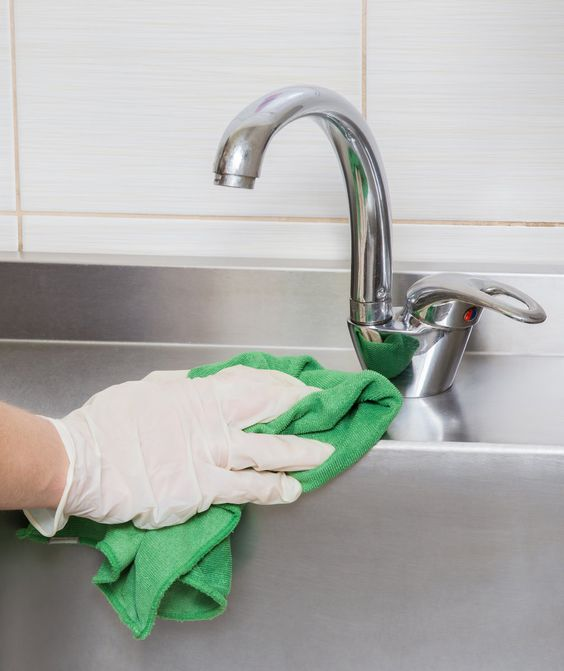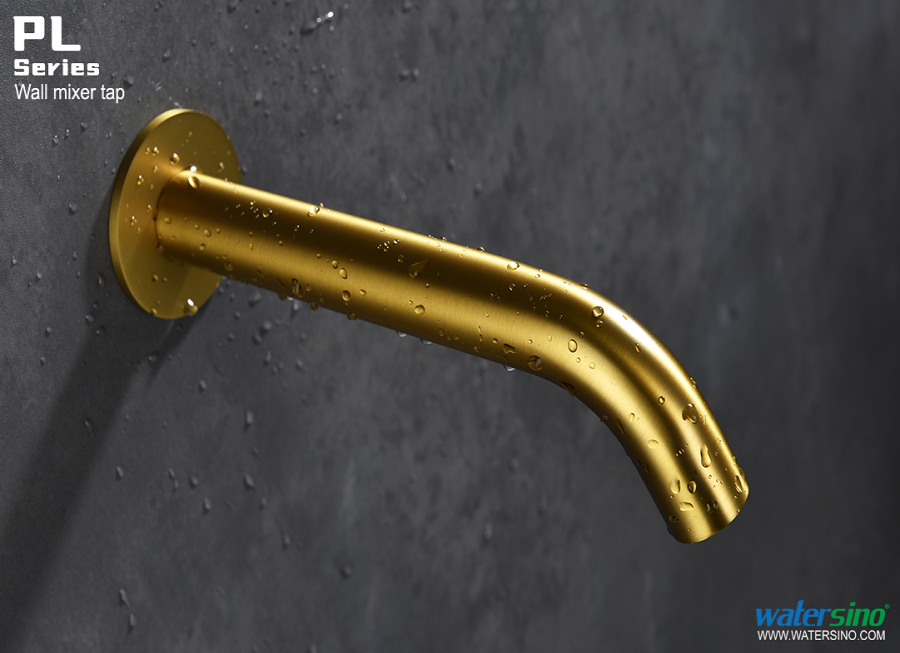When it comes to the heart of your home, selecting the right kitchen faucet is paramount for ensuring both functionality and aesthetic appeal. Our comprehensive buying guide is designed to walk you through the process step by step, empowering you to make an informed decision when choosing a kitchen faucet.
In this guide, we’ll cover everything from the importance of functionality and durability to the various types of kitchen faucets available on the market. Whether you’re looking for practical tips for purchasing kitchen faucets or seeking a comprehensive kitchen faucet purchasing guide, we’ve got you covered.
What is a Good Kitchen Faucet?

When it comes to selecting a good kitchen faucet, there are several key factors to consider. A top-notch kitchen faucet seamlessly blends functionality, durability, aesthetics, and style to enhance the overall kitchen experience.
Functionality and Durability
- Importance of Functionality: A good kitchen faucet should offer seamless functionality, providing easy and convenient access to water for various tasks such as washing dishes, filling pots, and rinsing produce.
- Factors for Long-lasting Performance: Look for features such as ceramic disc valves and solid brass construction, which contribute to the durability and longevity of the faucet. Additionally, features like touchless activation or motion sensors can add convenience while reducing wear and tear on the faucet.
Aesthetics and Style
- Aesthetics: Beyond functionality, a great kitchen faucet should complement the overall aesthetic of your kitchen space. Whether your kitchen boasts a modern, traditional, or industrial design, the faucet should seamlessly integrate with the decor.
- Matching with Kitchen Decor: Consider finishes that align with your kitchen’s color scheme and style. From classic stainless steel to sleek matte black or elegant brushed nickel, choose a finish that harmonizes with your existing decor.
By carefully considering these aspects, you can ensure that your chosen kitchen faucet not only meets your practical needs but also enhances the visual appeal of your culinary space.
How to Choose a Kitchen Faucet(Factors to Consider)

Faucet Type and Style
When it comes to selecting the best kitchen faucet, understanding the different types and styles is crucial. Here are some factors to consider when determining the faucet type and style that will best suit your needs:
- Functionality Requirements: Consider how you typically use your kitchen faucet. Do you need a sprayer for washing dishes, or would a simple swivel spout suffice? Understanding your specific requirements will help you narrow down the type of faucet that will work best for you.
- Matching with Kitchen Sink and Countertop: Take into account the design of your kitchen sink and countertop. If you have a large, double-basin sink, a high-arc faucet with a pull-down sprayer might be more convenient. For a smaller sink, a compact, single-handle faucet could be a better fit.
- Style Cohesion: The style of the faucet should align with the overall aesthetic of your kitchen. Whether your kitchen has a contemporary, traditional, or transitional design, there are faucets available in various styles to complement your space seamlessly.
Considering these factors will guide you in picking the right kitchen faucet type and style that not only meets your functional needs but also enhances the visual appeal of your kitchen.
Size and Compatibility
Understanding what size faucet is suitable for your kitchen sink involves more than just measuring dimensions. Here’s what to keep in mind:
- Sink Proportions: Take into account the size of your sink when choosing a faucet. A large faucet may overpower a small sink, while an undersized faucet may not provide enough clearance for larger sinks.
- Countertop Clearance: Ensure that there is adequate space between the back of the faucet and any obstacles such as walls or cabinets. This clearance is essential for unrestricted operation and maintenance.
- Compatibility with Existing Fixtures: If you’re not replacing the entire sink setup, ensure that the new faucet is compatible with any existing accessories such as soap dispensers or filtration systems.
By carefully considering these size and compatibility factors, you can ensure that the chosen kitchen faucet fits perfectly within your existing setup while meeting all functional requirements.
Different Kitchen Faucet Types

source from Pinterest
Single-Handle and Double-Handle Faucets
When exploring the diverse kitchen faucet styles available, it’s essential to consider the features and benefits of single-handle and double-handle faucets.
Single-Handle Faucets:
Single-handle faucets are known for their sleek and modern design. They offer convenience with easy one-handed temperature and flow control. The simplicity of a single lever also makes them an ideal choice for smaller sinks or bar areas where space is limited.
Double-Handle Faucets:
Double-handle faucets, on the other hand, provide separate handles for hot and cold water control. This classic design offers precise temperature adjustments and a timeless look that complements traditional kitchen aesthetics.
When choosing between these two options, consider your personal preferences, existing kitchen decor, and the specific functional requirements to determine which style best suits your needs.
Pull-Down and Pull-Out Faucets
Two popular varieties of kitchen faucets are pull-down and pull-out faucets, each offering unique advantages.
Pull-Down Faucets:
These faucets feature a spray head that pulls down directly into the sink. This design provides added flexibility for filling large pots or washing bulky items. Pull-down faucets are often favored for their professional look and ease of use.
Pull-Out Faucets:
Pull-out faucets have a more compact spray head that pulls out towards you. This design is practical for multitasking in the kitchen, allowing you to direct the water stream precisely where needed. Pull-out faucets are well-suited for kitchens with smaller sinks or limited space around the sink area.
Consider your specific kitchen tasks and available space when deciding between pull-down and pull-out faucet styles to ensure optimal functionality in your daily routine.
Kitchen Faucets with Side Sprayer
Kitchen faucets equipped with side sprayers offer additional convenience and versatility in the kitchen space.
Side sprayers provide targeted cleaning power for hard-to-reach corners of the sink or specific items being washed. They can also be used independently from the main faucet, making them useful for various kitchen tasks such as filling pots outside of the sink area.
When selecting a faucet with a side sprayer, consider factors such as reach, hose flexibility, and ergonomic design to ensure seamless integration into your daily cooking and cleaning routines.
Are Kitchen Faucets Universal?

source from Pinterest
Understanding Universality
When it comes to kitchen faucets, the concept of universality refers to the adaptability of a faucet to fit a wide range of sink configurations and setups. While some kitchen faucets are designed with universal compatibility in mind, not all faucets are universally adaptable to every sink or countertop.
Factors such as the number of mounting holes in the sink, the spacing between these holes, and the overall layout of the sink area can influence whether a particular faucet will be compatible with a specific setup. Additionally, the presence of additional features like soap dispensers or integrated sprayers can also impact universality.
Compatibility Considerations
When determining the compatibility of kitchen faucets with your specific setup, consider the following factors:
- Sink Configuration: Take note of the number of mounting holes in your sink. Standard sinks typically have either one to four pre-drilled holes for faucet installation. Ensure that the chosen faucet aligns with the available mounting hole configuration.
- Mounting Hole Spacing: Measure and verify the distance between the mounting holes on your sink. This measurement is crucial for selecting a faucet that aligns with your sink’s hole spacing.
- Additional Features: If your existing setup includes accessories such as soap dispensers or side sprayers, ensure that there is adequate space and compatibility for integrating these elements with your new faucet.
By carefully assessing these compatibility considerations, you can make an informed decision when selecting a kitchen faucet that seamlessly integrates with your specific sink and countertop configuration while meeting your functional requirements.
How to Measure for a Kitchen Faucet?
When it comes to selecting the right kitchen faucet, accurate measurements of your sink and countertop are crucial for ensuring a seamless fit. Measuring your sink and countertop is essential for determining the correct kitchen faucet size that will fit perfectly within your existing setup. An ill-fitting faucet can lead to operational inconveniences and aesthetic discrepancies, making precise measurements a critical aspect of the selection process.
Step-by-Step Guide
- Sink Dimensions: Begin by measuring the width and depth of your sink. These dimensions will help you determine the maximum clearance required for the faucet’s spout and handles.
- Countertop Space: Measure the distance between the back edge of the sink and any obstacles such as walls or cabinets. This measurement ensures that there is sufficient clearance for installing and operating the new faucet.
- Mounting Holes: If your sink has pre-drilled mounting holes, measure the spacing between these holes to ensure compatibility with the new faucet’s configuration.
- Additional Features: If you plan to integrate accessories such as soap dispensers or side sprayers, measure the available space around the sink area to accommodate these elements alongside the new faucet.
By following this step-by-step guide, you can obtain accurate measurements that will guide you in selecting a kitchen faucet that fits seamlessly within your existing sink and countertop layout.
Additional Considerations
In addition to basic measurements, here are some other factors to consider when measuring for a kitchen faucet:
- Spout Height: Take note of any obstructions above or around the sink area that could affect the height of the faucet spout. Ensure that there is ample space above the sink for unrestricted operation.
- Handle Clearance: Consider any obstructions such as backsplashes or window ledges that could interfere with handle movement once the new faucet is installed.
- Aerator Reach: Measure how far from the center of the spout you’ll need water flow, especially if you have a large or multi-basin sink setup.
Tips for Ensuring a Precise Fit
- Use a flexible tape measure for accurate dimensions.
- Double-check all measurements before proceeding with purchasing a new kitchen faucet.
- Consider seeking professional assistance if you’re uncertain about any measurement requirements.
- Keep in mind any future remodeling plans when determining sizing needs to avoid potential conflicts down the line.
Installing and Maintaining Your Kitchen Faucet

source from Pinterest
Installation Process
Setting up and caring for your kitchen faucet involves a straightforward installation process that can be accomplished with the right tools and a systematic approach. Here’s a step-by-step guide to installing a kitchen faucet along with the common tools and materials required for the installation.
- Prepare the Workspace: Before beginning the installation, clear out the area around the sink to provide ample space for maneuvering. Additionally, ensure that the water supply to the sink is turned off to prevent any leaks during the installation process.
- Gather Essential Tools and Materials: The following tools and materials are commonly required for installing a kitchen faucet:
- Adjustable wrench
- Plumber’s putty or silicone sealant
- Basin wrench
- Screwdriver
- Towel or rag
- Remove the Old Faucet (If Applicable): If you’re replacing an existing faucet, start by disconnecting the supply lines and removing the old faucet. Clean any debris or buildup around the sink area before proceeding.
- Assemble New Faucet Components: Carefully follow the manufacturer’s instructions to assemble all components of your new kitchen faucet. This typically includes attaching handles, spout, and any additional features such as side sprayers or soap dispensers.
- Secure Faucet in Place: Position the new faucet in its designated location on the sink deck, ensuring that it aligns properly with any pre-drilled mounting holes. Use a basin wrench to secure mounting nuts from below while holding the faucet in place from above.
- Connect Water Supply Lines: Once securely positioned, connect the hot and cold water supply lines to their respective valves using an adjustable wrench. Ensure that all connections are tight and free of leaks.
- Test for Leaks: Turn on both hot and cold water supplies to check for any leaks around connections or at the base of the faucet. Address any leaks immediately by tightening connections as needed.
- Flush Faucet Lines: Run water through both hot and cold lines to flush out any debris or air pockets before regular use of your new kitchen faucet.
By following these steps and using appropriate tools, you can successfully install your new kitchen faucet without complications.
Maintenance Tips
Maintaining and installing your kitchen faucet goes hand in hand with essential maintenance practices designed to prolong its lifespan while ensuring optimal functionality in your kitchen space.
- Regular Cleaning: Keep your kitchen faucet clean by wiping it down regularly with a mild soap solution and soft cloth. Avoid abrasive cleaners that can damage finishes over time.
- Inspect for Leaks: Periodically check under-sink areas for signs of leaks or moisture accumulation around supply line connections or at the base of the faucet itself.
- Clean Aerator Screens: Remove and clean aerator screens on a regular basis to prevent mineral buildup that can affect water flow over time.
- Address Drips Promptly: If you notice persistent dripping from your faucet, address it promptly by replacing worn-out washers or seals within handles or cartridges as needed.
- Troubleshooting Common Issues: Familiarize yourself with troubleshooting common issues such as low water pressure, erratic temperature control, or unusual noises during operation.
Conclusion
In conclusion, the process of selecting the perfect kitchen faucet for your needs can be simplified by leveraging the insights provided in this comprehensive buying guide. By understanding the essential factors to consider and familiarizing yourself with the various types of kitchen faucets available, you can confidently navigate the purchasing journey.












